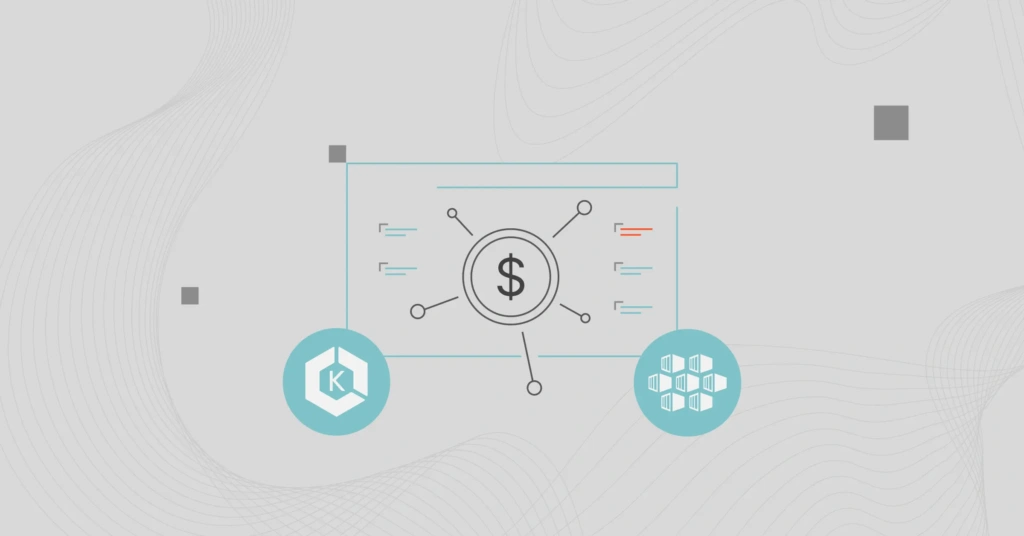As of 2023, Kubernetes firmly holds the reins of the container orchestration market with a commanding 92% market share, underscoring its position as the unparalleled leader in this domain.
Celebrated for its exceptional scalability, robustness, and flexibility, Kubernetes boasts widespread integration across numerous industries, supported by development efforts from more than 7,500 companies. This rising tide of adoption has thrust the imperative of cost optimization with Kubernetes to the forefront of organizational priorities.
However, as companies strive to accommodate growing workloads, the challenge of scaling Kubernetes clusters cost-effectively becomes increasingly important. This is where managed Kubernetes services like AKS and EKS step in, offering robust solutions combining scalability and cost savings.
Both AKS and EKS provide a suite of features designed to streamline the deployment and scaling of Kubernetes clusters, but they approach cost management in distinct ways. From managed node pools in AKS to managed node groups in EKS, each platform offers unique capabilities that can significantly reduce the operational overhead and financial strain associated with scaling cloud resources.
This article aims to provide a comprehensive guide for scaling Kubernetes on a budget. Readers will gain valuable insights into managing their Kubernetes deployments more effectively and efficiently through a detailed explanation of each platform’s scaling features and the added benefits of platforms like CloudZero.
Understanding Kubernetes Scaling
Kubernetes scaling is a cornerstone of efficient containerized application management and is pivotal for balancing performance with cost. It hinges on two primary strategies: horizontal scaling, which adjusts the number of application instances, and vertical scaling, which modifies the resources allocated to an instance.
Managed Kubernetes services simplify this process by offering automated scaling features. AKS’ MNP (managed node pools) and EKS’ MNG (managed node groups) allow for seamless adjustment of resources in response to demand, optimizing operational costs.
This dynamic scalability ensures that applications remain responsive without unnecessary expenditure, avoiding overprovisioning during low usage and maintaining performance during peak times. Through strategic scaling, organizations can achieve a delicate balance between efficiency and cost, leveraging the full potential of Kubernetes in their cloud infrastructure management efforts.
Scaling Features In AKS
Managed node pools in AKS automate the scaling process, dynamically adding or removing nodes based on the application requirements. This automatic scaling ensures that resources are efficiently utilized, eliminating the need for overprovisioning and reducing associated costs.
Furthermore, AKS provides the flexibility to select from various Virtual Machine (VM) sizes and types, allowing users to tailor their environment to the optimal balance of performance and cost. This capability is particularly beneficial in scenarios where workload patterns are predictable, and resource demands fluctuate regularly.
In real-world applications, AKS’s scaling features excel in environments that experience variable traffic, such as e-commerce platforms during sale events or applications with cyclical usage patterns.
By leveraging managed node pools, these platforms can maintain high availability and performance during peak times while minimizing costs during quieter periods, showcasing the tangible benefits of AKS’s scalable architecture.
Scaling Features In EKS
The cost-saving potential of EKS’s managed node groups is significantly enhanced through their support for both Spot Instances and Reserved Instances.
Spot Instances allow users to take advantage of unused AWS capacity at a fraction of the cost, which is ideal for workloads with flexible start and end times. Reserved instances offer a way to reduce expenses with a commitment to use specific resources over a defined period, perfect for predictable workloads.
EKS’s elastic scaling capabilities ensure that resources are precisely aligned with demand, preventing overprovisioning or underutilization.
For instance, companies hosting web applications can leverage EKS to seamlessly scale up resources ahead of anticipated traffic spikes, such as online sales events, and scale down one the demand subsides. This dynamic scaling, combined with cost advantages of Spot and Reserved instances, makes EKS an effective platform for managing Kubernetes workloads with optimal cost efficiency.
Comparing AKS And EKS Scaling Features
When comparing the scaling features of AKS and EKS, both platforms offer robust solutions for dynamic resource management and cost optimization in Kubernetes environments. AKS shines with its managed node pools, allowing for seamless scalability and a strong emphasis on integrating with Azure’s native services.
On the other hand, EKS stands out with its managed node groups and extensive support for Spot and Reserved instances, offering a flexible approach to scaling and cost savings, particularly for applications with variable workloads.
AKS and EKS provide scaling capabilities, real-time resource adjustment, and cost-effective scaling options, underscoring their similarities in enabling efficient Kubernetes management. However, the choice between AKS and EKS often comes down to specific use cases and organizational preferences.
For instance, enterprises deeply embedded in the Azure ecosystem may find AKS a more seamless fit. At the same time, those looking for the broadest flexibility in cost optimization strategies might lean towards EKS, especially if they already utilize AWS services extensively.
In summary, both AKS and EKS offer compelling features for Kubernetes scaling, with the decision primarily influenced by existing cloud infrastructure, budget considerations, and specific application requirements.
CloudZero: Maximizing Cost Savings On AKS And EKS
While it’s clear that managed version of Kubernetes provides many benefits, their emergence has created a need for controlling costs. CloudZero emerges as a vital platform in cloud cost management, specifically tailored for organizations leveraging Kubernetes on AKS and EKS.
By providing detailed insights into spending patterns, CloudZero empowers users to navigate the complexities of cloud costs with precision and ease.
At its core, CloudZero offers a suite of features designed to enhance cost efficiency across Kubernetes environments. Real-time cost monitoring and alerts ensure that organizations are always aware of their spending, enabling immediate adjustments to avoid budget overruns.
This platform goes beyond metric tracking; it delves into spending data to identify inefficiencies, suggesting actionable cost-saving measures that can lead to substantial financial improvements.
One of CloudZero’s standout capabilities is its ability to dissect Kubernetes spending on both EKS and AKS, offering granular visibility into where and how funds are allocated. This level of insight is crucial for making informed decisions about resource allocation and scaling, ensuring that every dollar spent contributes to organizational objectives.
Success stories from companies utilizing CloudZero highlight its impact, from significant cost reductions achieved through optimized resource usage to enhanced budget forecasting that aligns with business growth strategies.
These case studies underscore CloudZero’s role as a platform for cost management and a strategic partner in achieving more efficient, cost-effective cloud operations.
Don’t miss the opportunity to take your organization’s cost savings to the next level —  to see how CloudZero can help you!
to see how CloudZero can help you!








